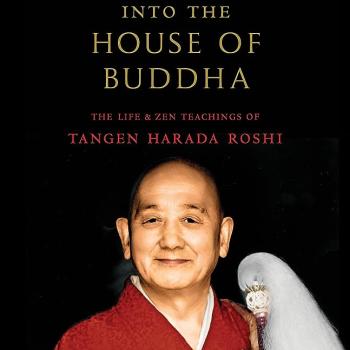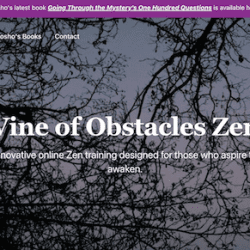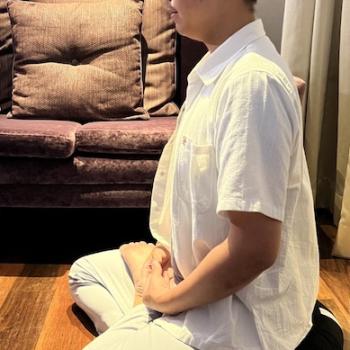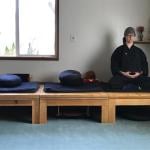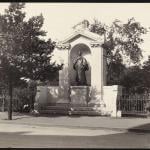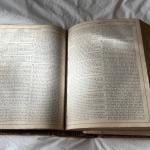I’ve just come in from working in the garden, cleaning the perimeter and pruning the roses. I notice a change from when I first moved here. For the first three years, the early work in the garden was a quiet, blissful experience. Not so much this year. Now it is more subtle enjoyment.
Tonight what was coming up for me in the work was the discussion on one of the Zen teacher listserves about the recent article in the New York Times Magazine about Lou Nordstrom, who was told by his teacher to “kill the watcher” and “don’t have any human emotions.” Barry Magid describes the long-term emotional consequences for someone in a dependent relationship hearing these instructions:
“The whole aspect of having to trust such a person, to have your life in their hands, to have to submit to their teaching as the price of a whole way of life for which he gave away everything, of his eventual potential as a teacher in his own right being dependent on the judgment of such a teacher – all this adds up to a severely masochistic master-student relationship – one in which one’s own feelings about oneself, one’s teacher and the choices one has made must be buried or denied in the name of practice.”
I am very moved by this.
Tantamount to “kill the self!” this is the path of deconstruction taken to an un(w)holy extreme, in my view and I believe in Dogen Zen in general. Dogen encourages us treat the by-stander with care and to include the watcher in our practice. It seems that Dogen’s reaction to the vogue Zen of his day was precisely on this point and his occasional harsh criticism of other masters seems quite fitting.
Here’s Dogen from Ten Directions in bold type. I’ve added Carl Bielefeldt’s notes in italics, slightly trimmed down, as explanation for each line. I’ll come back to some of these lines later, but for tonight I’m posting this simply as a contrast.
All the worlds in the ten directions are the radiance of the self.
A somewhat unusual expression, likely derived from the more common “radiance of the buddha,” used for the nimbus surrounding a buddha’s body and, by extension, his wisdom.
The self means the nose before your father and mother were born.
The expression “before your father and mother were born” (some would read this, “before your father and mother gave birth”) is a classic Chan expression for the true self.
The nose inadvertantly in the hand of the self is called “all the ten directions.”
A decidedly odd expression, presumably meaning something like “the person being by nature (or finding itself) in the self.” Perhaps playing with combinations of sayings in Chan texts such as “the nose is in another person’s hand” or “the entire great earth is at once in my hand.”
Still, when the self is realized, it is “the kōan of realization (i.e., genjokoan).”
Or “when the self appears.” The adverbial “still” here reads shika aru ni in an adversative sense; it might also be taken to mean “thus.”
Genjokoan might be translated as The Truth Unfolding so this last line might be renedered:
“Thus when the self appears, it is the truth unfolding.”
This suggests a markedly different flavor of practice from what Lou Nordstrom confronted.
Comments welcome.


